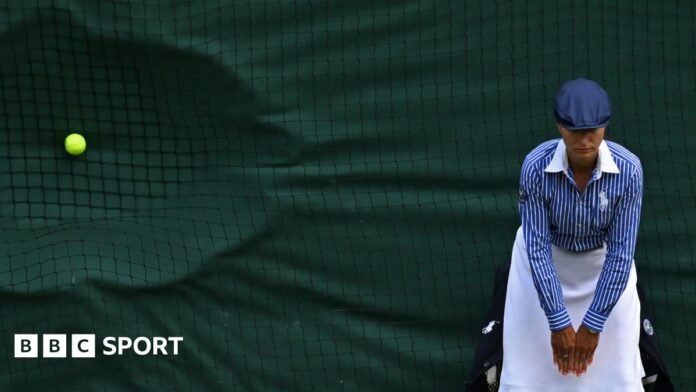Thomas Sweeney’s first incentive to become a line judge was the offer of a free sandwich.
For Pauline Eyre, who called the lines at Wimbledon for 16 years, some natty blazers and the chance to buy tickets for the tournament were the main recompense for work she had to take annual leave to do.
Nowadays the best officials might earn up to £200 a day plus expenses.
But line judging has never been about the money for those who spend hours leaning forward, hands resting on knees, staring intently at a line of chalk to determine in a split second on which side of it the yellow ball has bounced.
Being so close to Jana Novotna on Centre Court that she could see her foot shaking on the first point of a Wimbledon final or being “psyched out” by John McEnroe were priceless experiences for Eyre.
And then there were the outfits.
“There’s nothing quite like walking out on to the iconic grass courts at SW19, wearing the uniform of what many consider the best-dressed officials in all of sport,” Malgorzata Grzyb, chair of the Association of British Tennis Officials (ABTO), told BBC Sport.
But times have changed. Next week at Wimbledon there will be no line judges for the first time in its 148-year history, with electronic line calling being introduced.
Players and umpires have already got used to the new set-up as it has been at other tournaments for a while, but on the green grass at Wimbledon, where advertising logos are muted and the players are dressed in white, the emptier courts may feel that bit more noticeable.
“It’s all the tradition of Wimbledon – the people and the funny uniforms – and that’s a bit of personality that’s gone,” said Eyre. “I think it’s all of those little things that made Wimbledon Wimbledon.”
Traditionalists will miss them, but technology fans will point to progress.
BBC Sport has been finding out what umpires, players and line judges make of the move.






